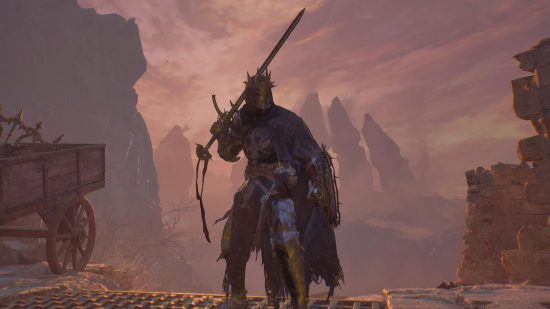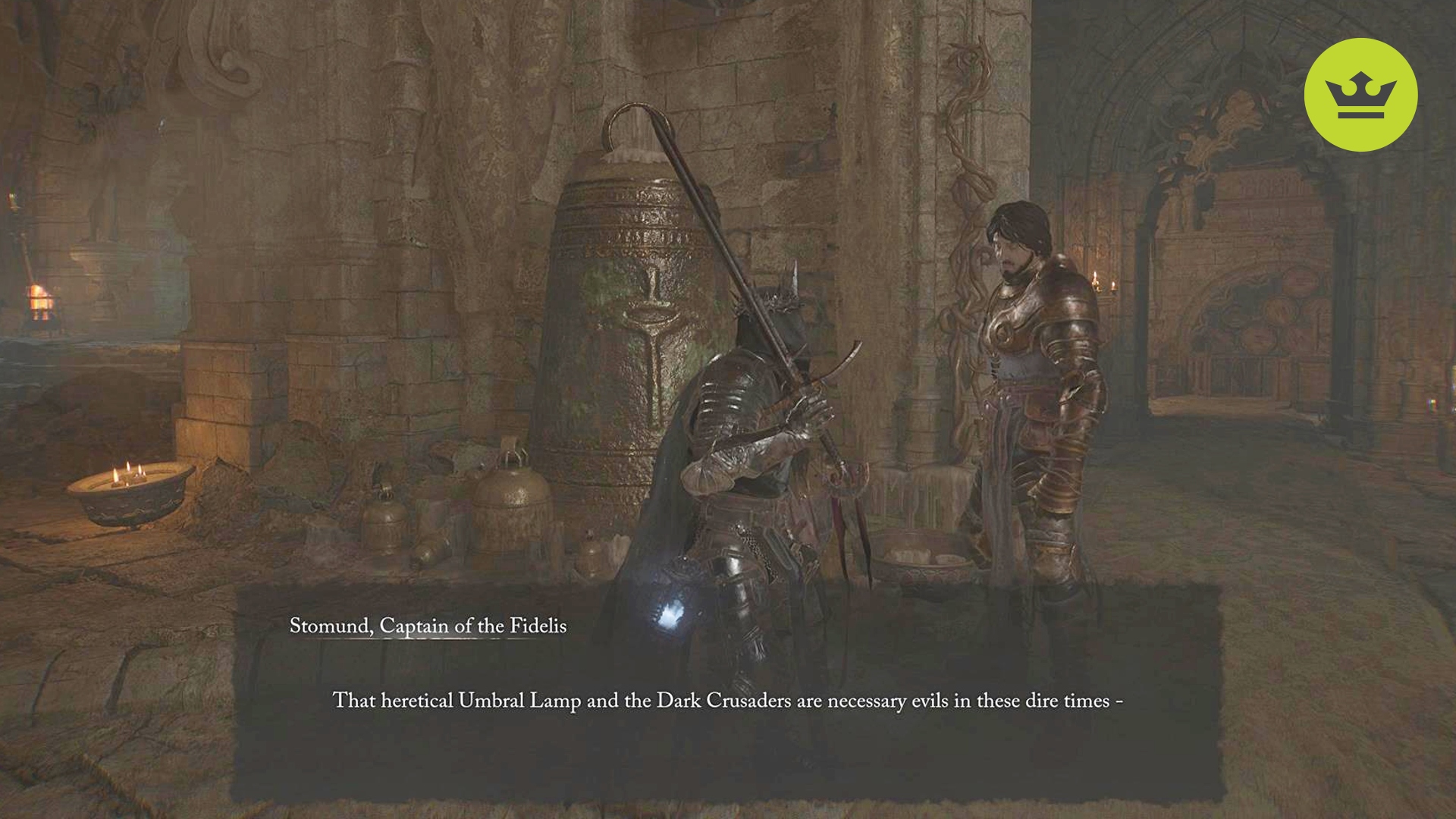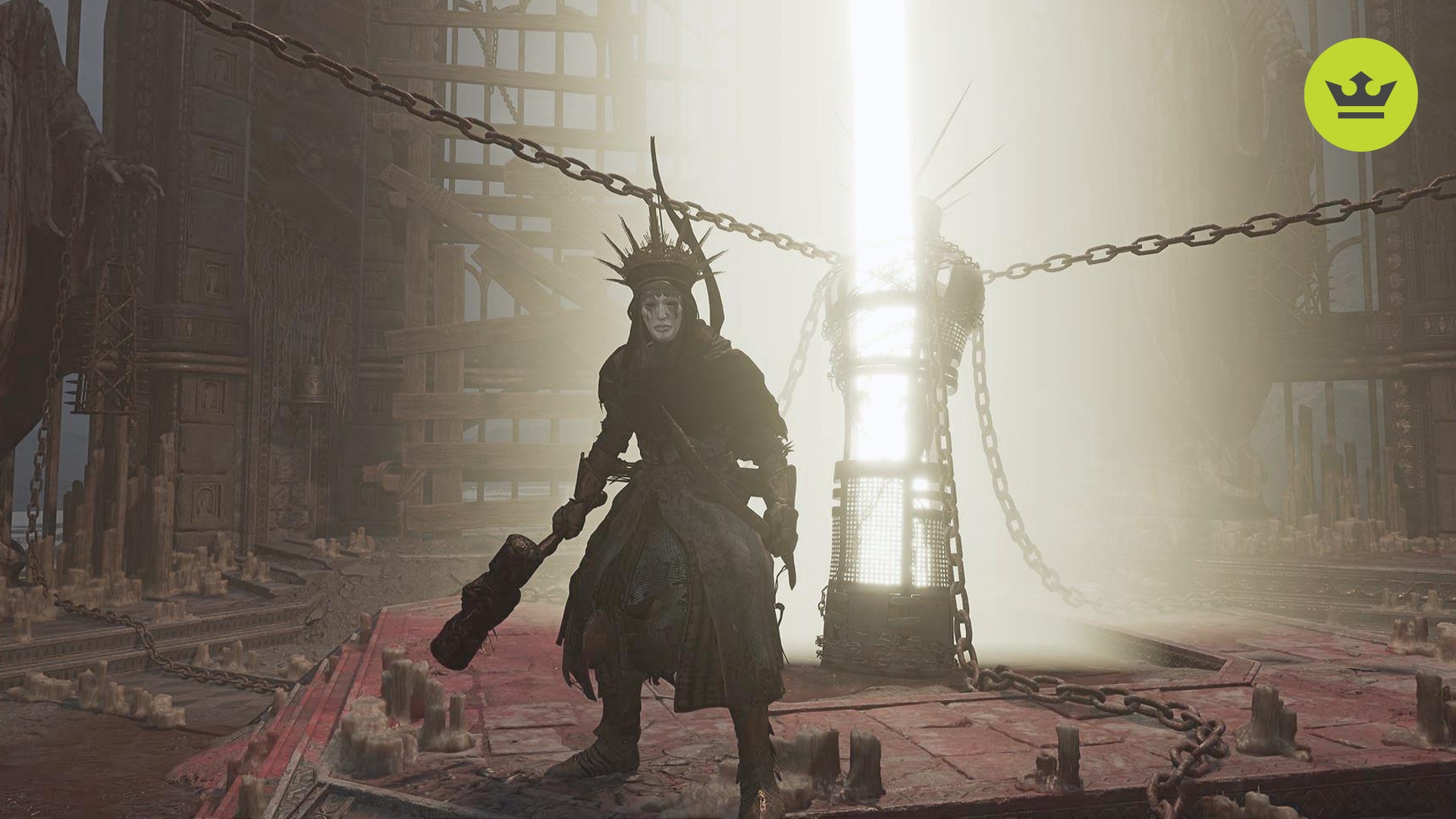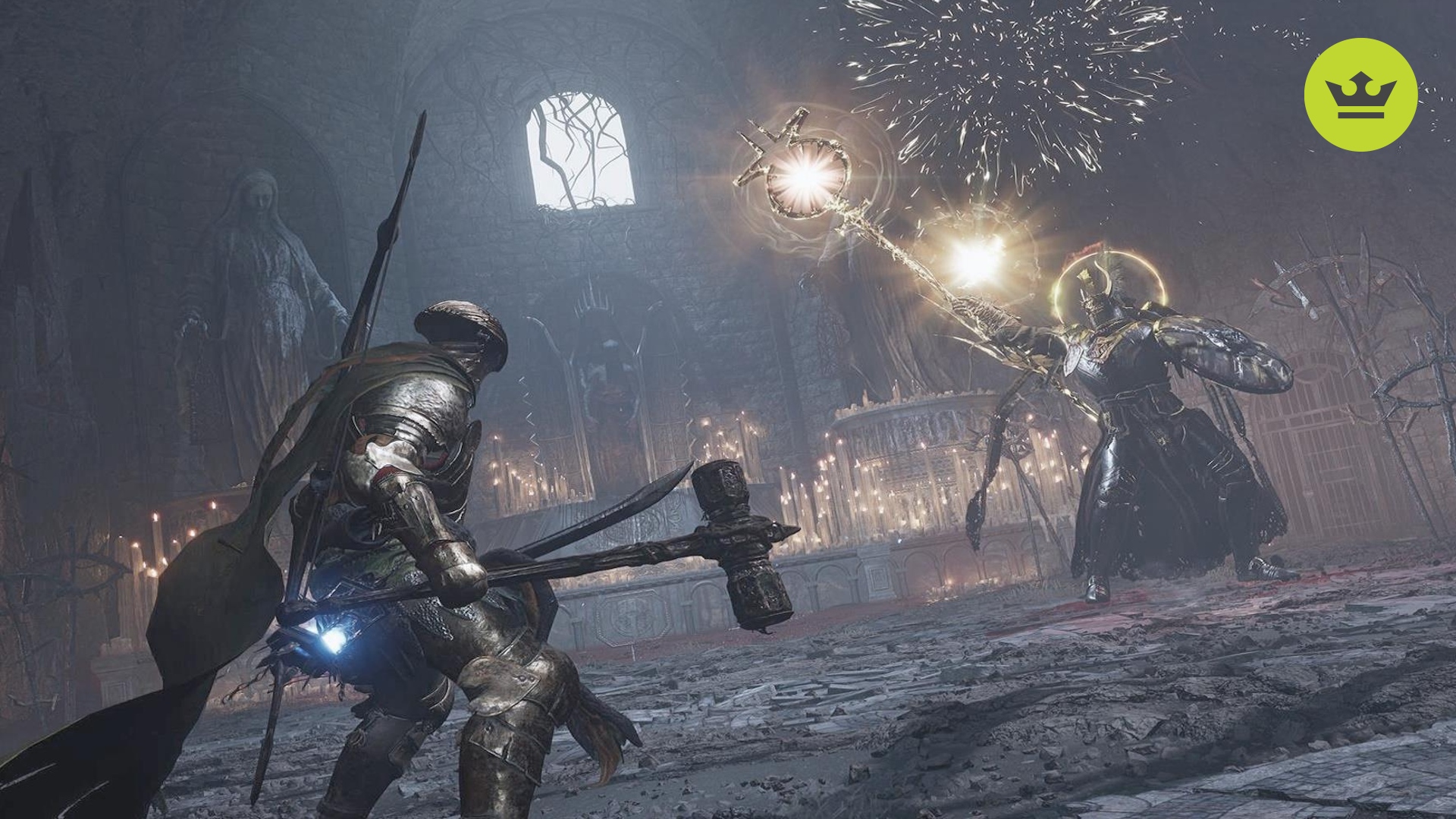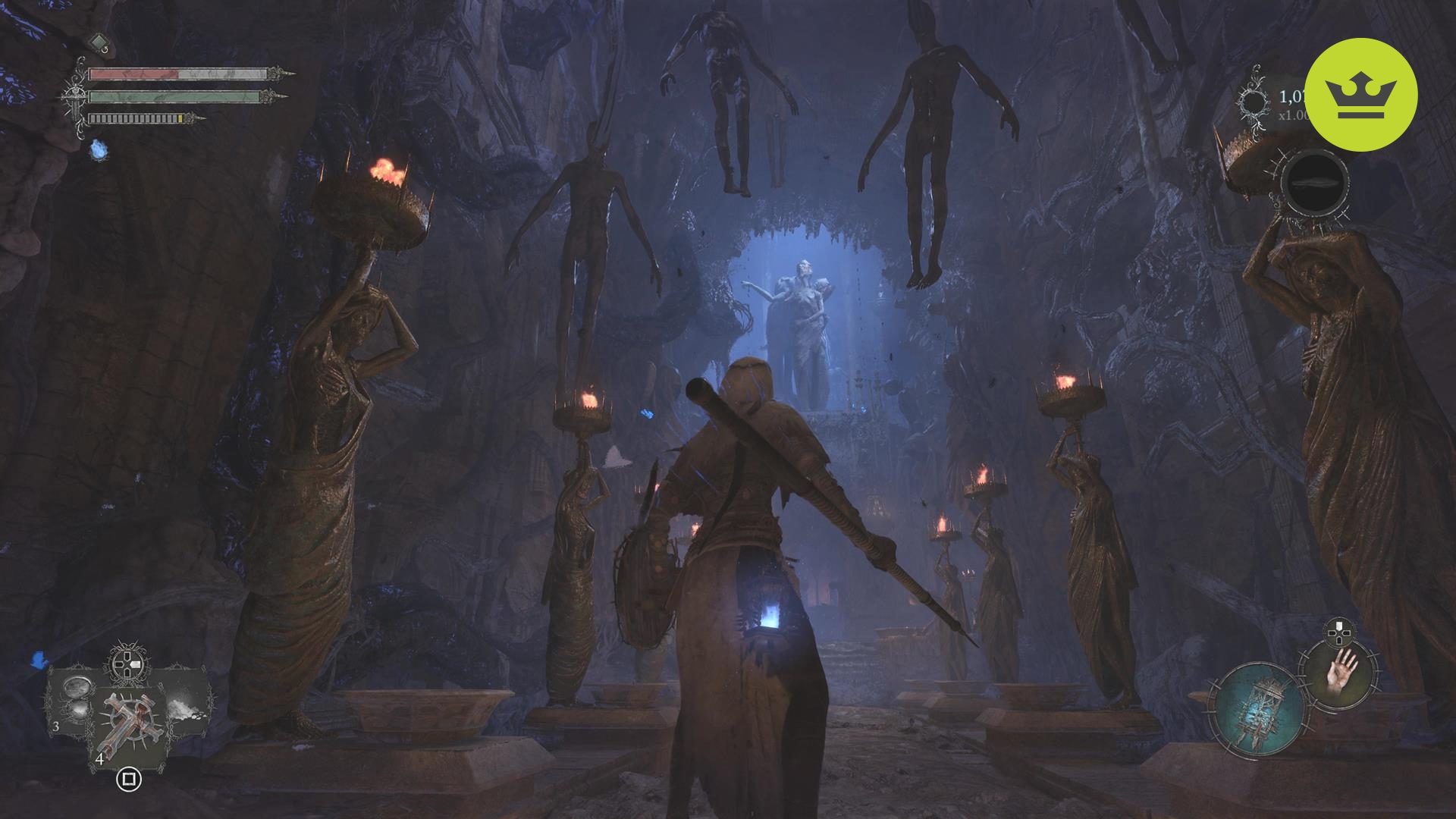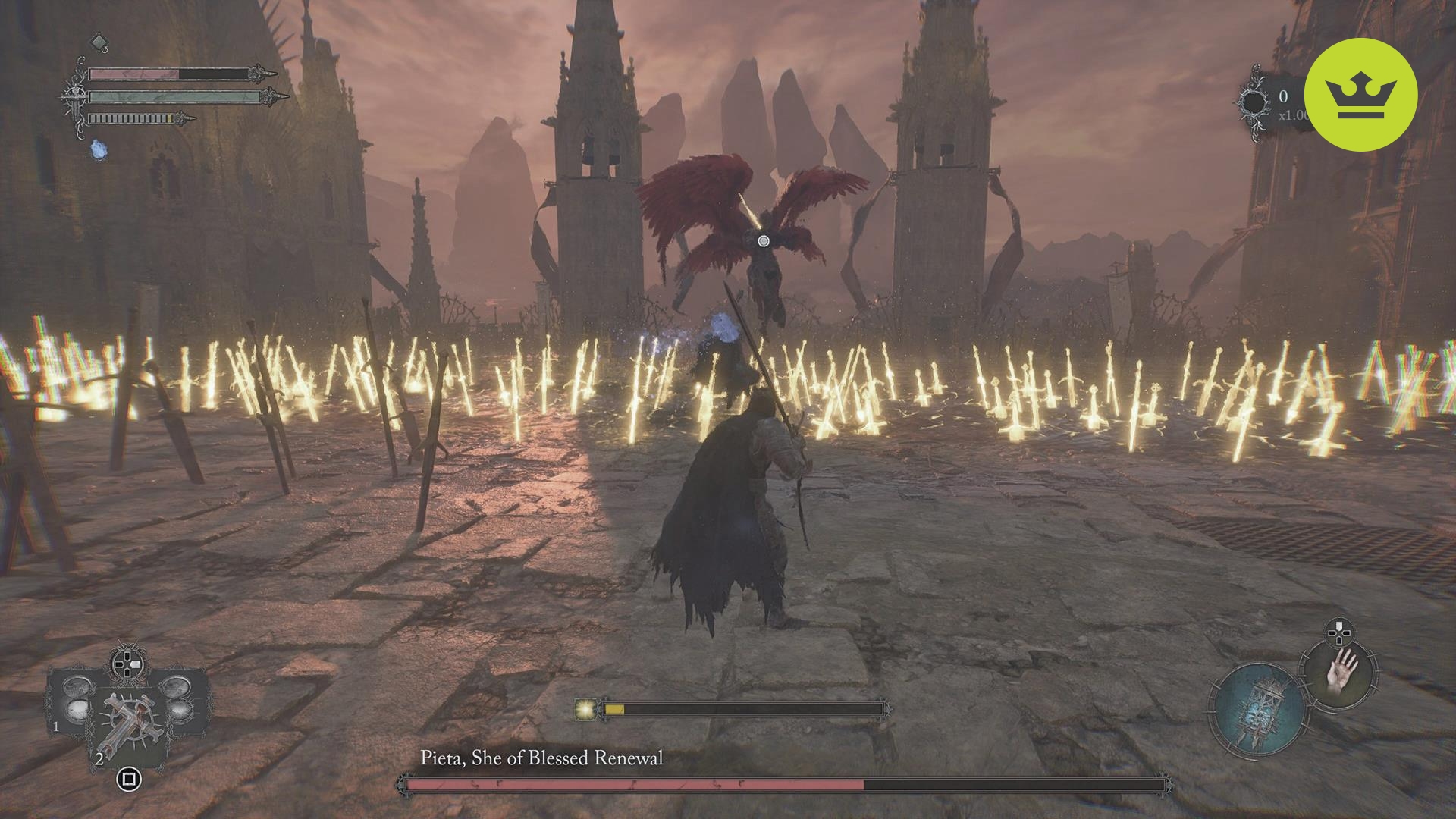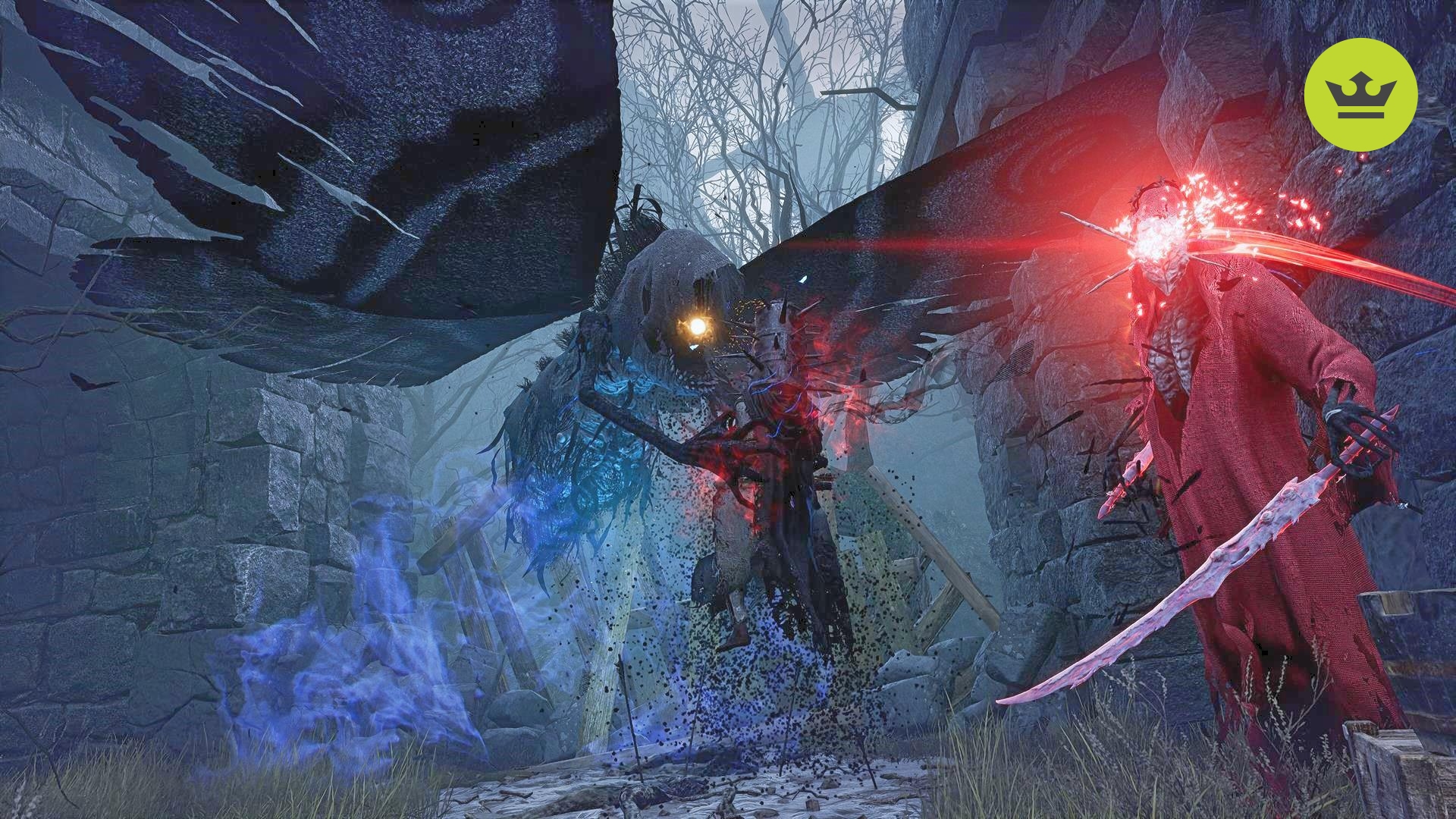Our Verdict
Lords of the Fallen gets off to a great start with creative ideas, a truly disturbing atmosphere, and exhilarating combat. Unfortunately, several missteps ensure that the only things that are falling here are your expectations.
Every year, we end up with at least a couple of new soulslike games, all eager to become the next big hit. Already in 2023 we’ve seen the twisted tales of Lies of P and action-shooter Remnant 2 pushing the genre in new ways. Now, our Lords of the Fallen review will dive into what developer Hexworks has to offer. To be clear, Lords of the Fallen is considered as an eponymous sequel to a game released in 2014. That, in itself, does seem a bit strange, considering that we’re far removed from that era of gaming. Coincidentally, the game itself presents an odd conundrum, too: it does a lot to set itself apart from the rest, yet it has various glaring issues, as though it’s still stuck in the past.
Chief among these problems is how Lords of the Fallen foregoes traditional storytelling, instead relying on cryptic clues. While some of the best RPGs and soulslikes manage to do this in a compelling way that doesn’t impact the story, the key difference here is that much of the narrative is purposefully vague, almost to the point of being disconnected, and I found it hard to follow.
Basically, there are two forces at war: the Rhogar and the Radiant – think demons and evil legions, versus the followers of light. There’s also a third group, the Umbral, named after their alternate shadow realm, which we discuss a bit later. Naturally, every faction hates your character, a Dark Crusader and Lampbearer, someone who embarks on a quest to cleanse the beacons to forever seal the demon Adyr.
What follows is a curious narrative arc that’s gleaned less from outright exposition or cutscenes, and more from piecing together contextual clues or bits of dialogue. For instance, I’ve heard from others reviewing the game that there are supposed to be three endings based on who you side with, and yet the whole journey felt so poorly guided that I can’t recall when I had to actually choose a side, if ever those decisions presented themselves. Worse, some characters would disappear, almost without warning (again, a genre staple), but that only led to more confusion and unnecessary searching.
Unlike the disappointing storytelling, exploration – another important facet in a soulslike – is something that’s truly remarkable in Lords of the Fallen. The world of Mournstead has vast, interconnected levels, almost labyrinthine in their design and filled to the brim with dark fantasy tropes. From the towering parapets of castles and frigid snowy fields, to fetid swamps and burned-out ruins of villages complete with piles of decaying corpses, I was immersed in its grim setting.
Exploration is further aided by the Axiom Realm versus Umbral Realm “planeshifting” feature. The former is the world that you see – the reality before your eyes. The latter, meanwhile, is the shadow realm populated by lost souls and hungry creatures lurking in the darkness. In effect, the campaign has you switching between these two worlds using your Umbral Lamp, complete with a seamless on-screen transition that’s nothing short of mesmerizing to behold.
For instance, if I was looking at a castle rampart in the Axiom Realm, I could catch a glance of the Umbral Realm to see the same structure, albeit covered in vine-like corruption and with petrified humans protruding from its edifice. Moreover, if my character dies in the Axiom Realm, I’m instantly switched to the Umbral Realm. It’s akin to having an extra life, though deaths in the Umbral Realm cause you to respawn at the last waypoint/bonfire you used.
The planeshifting feature also works in terms of traversal sections, which are almost mini-puzzles in their own right. Got a deep body of water in front of you? Switch to the Umbral Realm to find that it’s a walkable sloped area. Looking at nothing but a vast chasm? You might realize that there’s a floating ledge made of gray, sinewy material that allows you to cross. I found the implementation of the material and spectral plane transitions quite splendid, and it made me think of Legacy of Kain: Soul Reaver, a classic from the days of the original PlayStation console.
Likewise, I can’t count the number of times the overall atmosphere made me tense. This is further bolstered by haunting melodies and chilling audio effects, as well as haptic feedback from the PS5’s DualSense controller, as I was walking through Lords of the Fallen’s dark world. In fact, there were moments when I had to do a double take as I panned the camera upon seeing shadow creatures: would they crumble into dust, or would they materialize as actual opponents?

Regrettably, the exploration factor in Lords of the Fallen is far from perfect. Firstly, the game doesn’t even have a conventional map. Instead, you’d have to look at drawings and clues on pieces of parchment. There was actually a long stretch of time when I just roamed around various zones looking for another beacon all because I couldn’t find a hint as to where I should go next.
Secondly, there are many areas that use an oft-repeated concept: have narrow pathways, add lots of enemy mobs, and watch as players fall to their doom. There are cliffsides, floating platforms, walkways, and even lava flows, where a poorly timed roll or a push from a well-hidden opponent meant a quick death. This has been one of my pet peeves when playing soulslikes due to clunky platforming and a lack of mobility options, and it persists here in Lords of the Fallen.
Thirdly, in spite of having all the tools to make for an engaging atmosphere, it’s as though Lords of the Fallen wanted me to rush things. In the Umbral Realm, you only have a short window of time to defeat enemies or traverse areas. After a while, tougher enemies appear, including a nigh-unkillable specter that also prevents you from healing. If you don’t switch back to the Axiom Realm soon, your character will certainly meet their demise.
Lastly, fast travel uses a combination of permanent waypoints/bonfires, also known as Vestiges, and temporary ones, known as Seedlings. The idea is good, at least on paper, but it’s executed in such a mind-boggling way that it defies all conventional norms. For reference, Seedlings require items that cost 2,500 vigor (the games basic currency), in effect making you buy unnecessary stuff instead of just focusing on your leveling stats or item upgrades. Worse, tagging a new Seedling flower bed overwrites the previous temporary checkpoint, which is a hassle if you want to return to an area that you visited earlier—you’ll have no choice but to fast travel using Vestiges, which are fewer and farther between.
Perhaps the most egregious part of this mechanic is that there are places with numerous Seedling flower beds scattered around, often in the most questionable locations. I recall plopping down a temporary waypoint in an area thinking that there was a boss encounter forthcoming, only to find out that there was nothing there – that’s a lot of Vigor, wasted. There were also moments when a spot might seem inconspicuous at first, but there’s actually a boss fight waiting for you. As such, not tagging a closer Seedling means a tiresome corpse run or extra grinding and returning to your hub just to have a bit of currency to create a temporary checkpoint. There were even Seedling checkpoints in spots that were fairly close to permanent Vestiges, which I found ridiculous since you could accidentally waste your item if you’re unaware.
Soulslikes, at this point in time, should no longer hassle players in this manner – the difficulty should come from frenetic battles, not confusing layouts due to the lack of a map, temporary-use checkpoints, and tiresome corpse runs. Just to prove a point, Elden Ring exemplified a combination of challenging gameplay and approachability, with its implementation of a massive world map filled with secrets, as well as numerous fast travel points, including those conveniently located in boss dungeons.
Speaking of fights, this is where Lords of the Fallen truly shines. You can expect bone-crunching action and punishing encounters. Attacks look, sound, and feel weighty, while perfectly-timed dodges, blocks, and grievous strikes are satisfying to pull off.
For my starting Lords of the Fallen classes, I played both the Blackfeather Ranger, an agility-based fighter that starts the campaign with a bow, and the Dark Crusader, an armored knight that’s automatically unlocked for those who have the Deluxe Edition. Leveling was fairly straightforward, as there were six stats to consider: Strength, Agility, Endurance, Vitality, Radiance, and Inferno (the last two are used for scaling if you’re a spellcaster). There’s also a respec or stat reset method, though I’ve rarely found the item needed for this. As such, I had to be careful when planning my build.
The Axiom versus Umbral Realm idea also plays a major role in combat, since you’ll be able to “pull the soul” out of a target, rendering them helpless. It’s possible to attack your foe’s soul, thereby causing damage to their physical body, or toss it over to another location, such as a pit or cliff’s edge, to see them fall to their doom.
As for the boss fights, I can certainly say that a few are overtuned, such as a battle against a Viking raider accompanied by his warhounds, with everyone immune until you destroy a floating eye in the Umbral Realm (you’re vulnerable to being attacked, and there’s also another elite enemy waiting in the Umbral Realm). The majority of opponents, however, were still highly daunting and challenging, but I also found them extremely rewarding after I emerged victorious.
These set piece moments, along with grotesque and macabre designs, are made to test your mettle, while also showcasing the boundless imagination of the developers. I was certainly awed by several of these encounters. My favorite bout has to be the one against the Spurned Progeny, a giant in a circular arena. The battle made me resort to ranged weapons, all while avoiding his arm swipes, fireballs, and lava flows, as well as making sure that I could bring him down just as he cast an instant death explosion.
Perhaps my only gripe with combat, apart from entire sections where I had to take on numerous foes while surrounded by environmental hazards, was how janky the lock-on system felt. There were moments when I would lock-on a nearby foe, and yet my character targeted someone farther away. This also became a problem when fighting numerous enemies in close quarters, since the lock-on system kept switching with the slightest push of the right thumbstick. This became an exercise in futility because it wasn’t possible to make changes to controller button mapping.
Finally, I’d be remiss if I didn’t discuss the factors that further impacted my experience while reviewing Lords of the Fallen. The first is the game’s use of a killer moth mimic. If the Dungeons & Dragons or Dark Souls mimics look like treasure chests, then Lords of the Fallen mimics look just like shiny loot orbs.
Here’s the kicker: it’s very hard to distinguish between real loot and mimic loot unless you look closely at the animations of the glowing lights. A single mistake could lead to your character getting eaten in the Axiom world, thereby causing you to switch to the Umbral world. If you don’t have a lot of health or if several enemies already surround you, that’s a guaranteed death and, naturally, a tedious corpse run (assuming you did not tag the nearest temporary Seedling waypoint). Needless to say, this was one of the most frustrating parts of the game.
Secondly, there were still performance issues as of the time of this writing. Originally, I chose Quality Mode to have improved visual fidelity, but I noticed framerate drops, especially in sections or battles with a lot of special environmental effects (i.e. fire, fog, or wither). I then switched to Performance Mode, which was hardly any better. At the very least, the game does include a neat Photo Mode feature that lets you save 3D images, which can be edited later. Currently, regular screenshots have textures with rough or frayed edges even with motion blur disabled.
Overall, Lords of the Fallen certainly has all the right tools, some of which make for a refreshing take on the soulslike genre. The frantic action, terrific boss fights, and planeshifting features all combine for what could’ve been a superb offering from Hexworks. Sadly, there’s also a litany of issues, from performance drops and overtuned fights, to poor storytelling and annoying mechanics that mar exploration and immersion, leading to plenty of moments of disappointment in my 40-hour playthrough.
